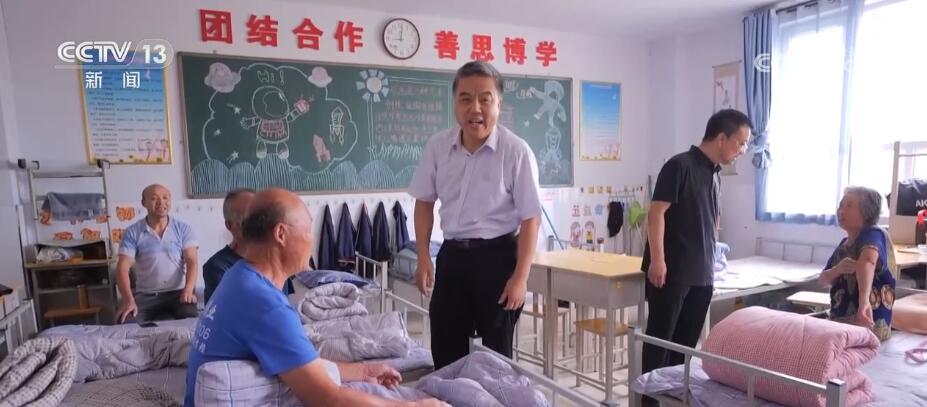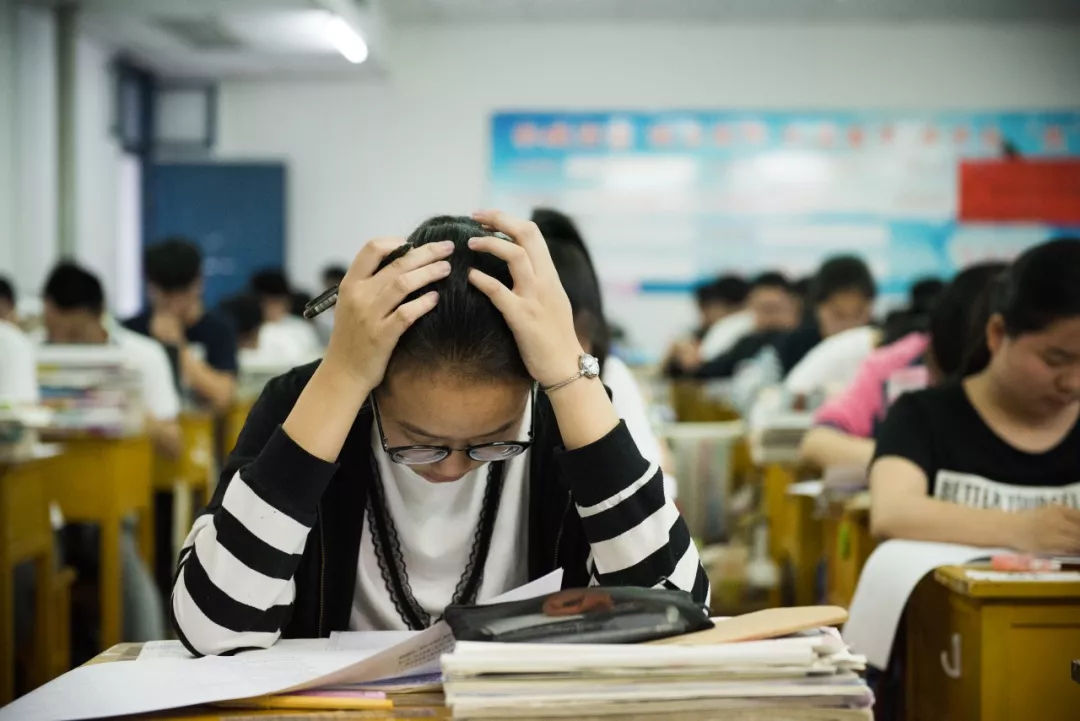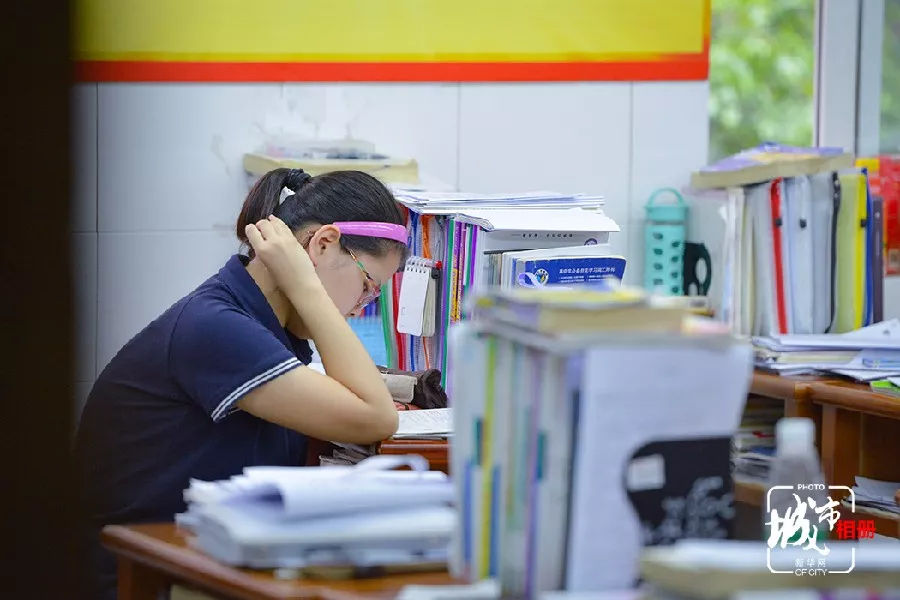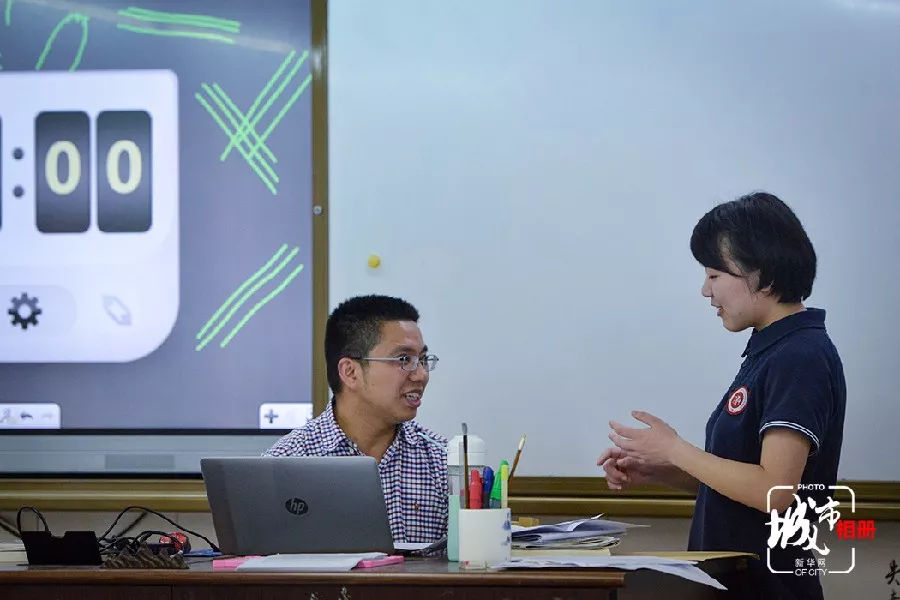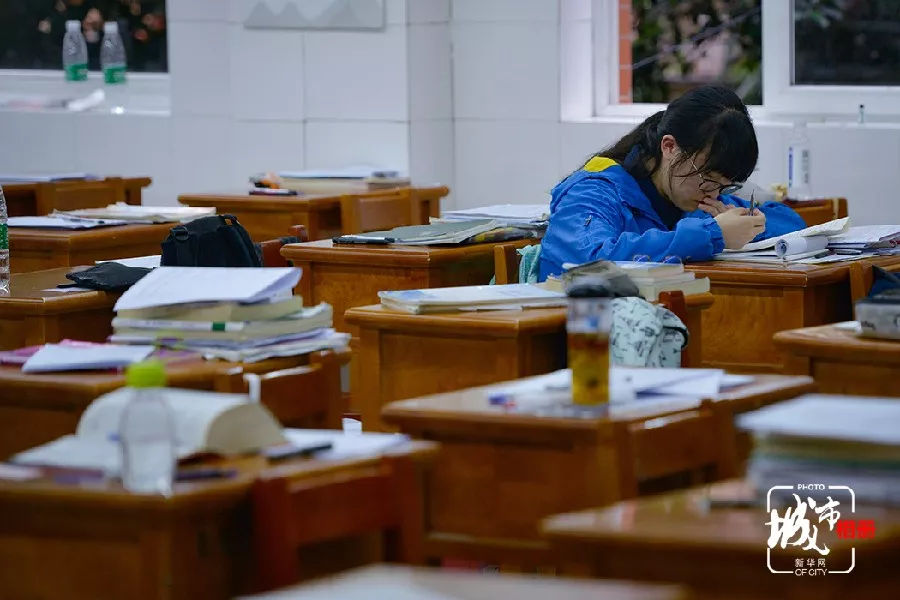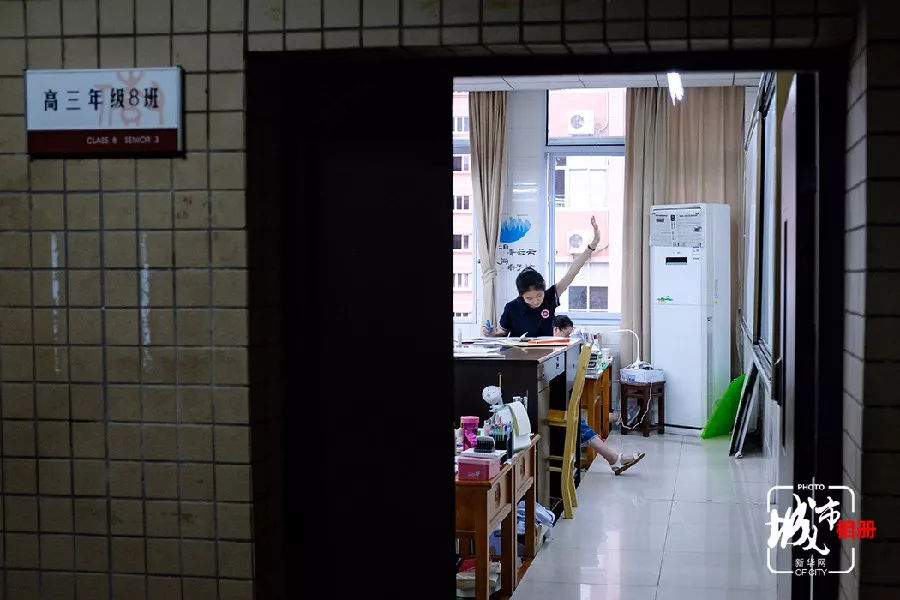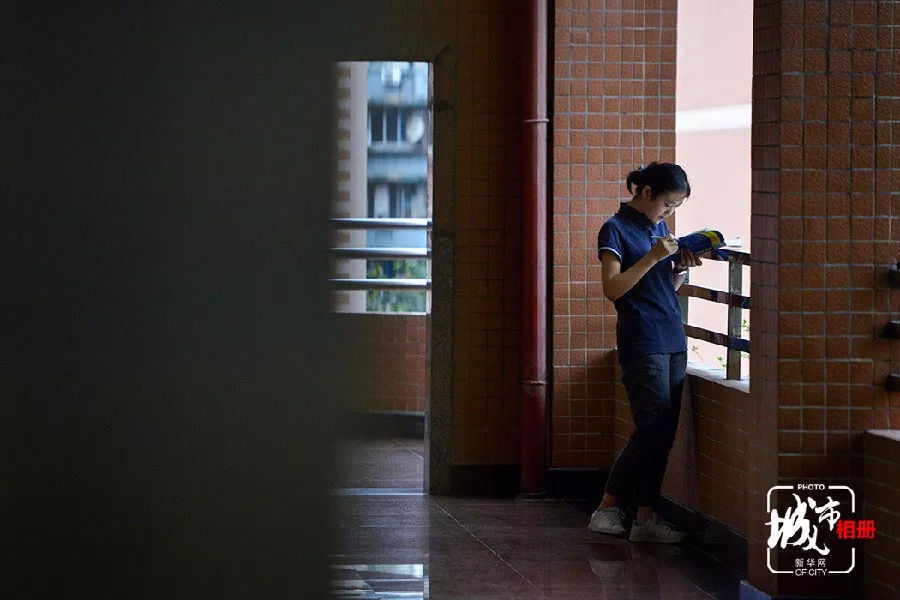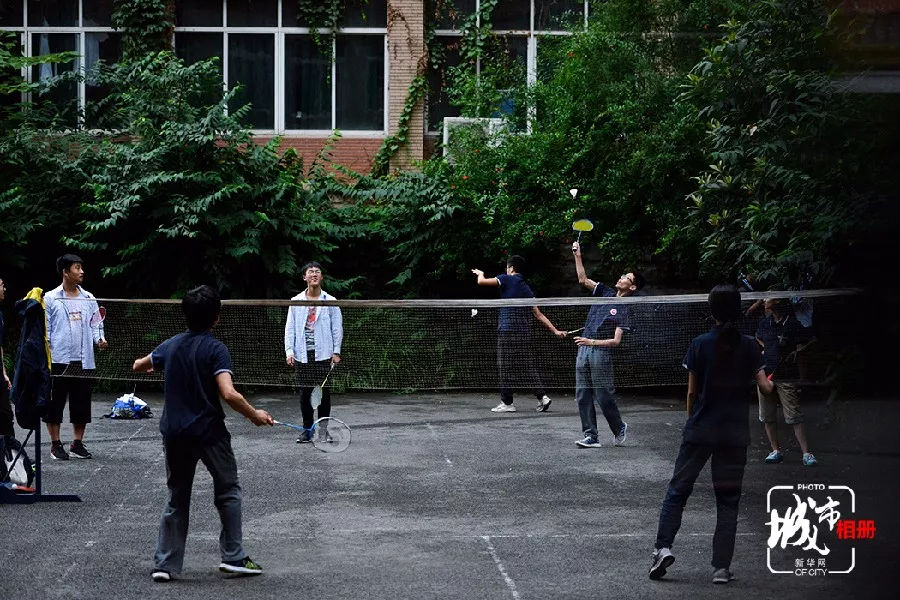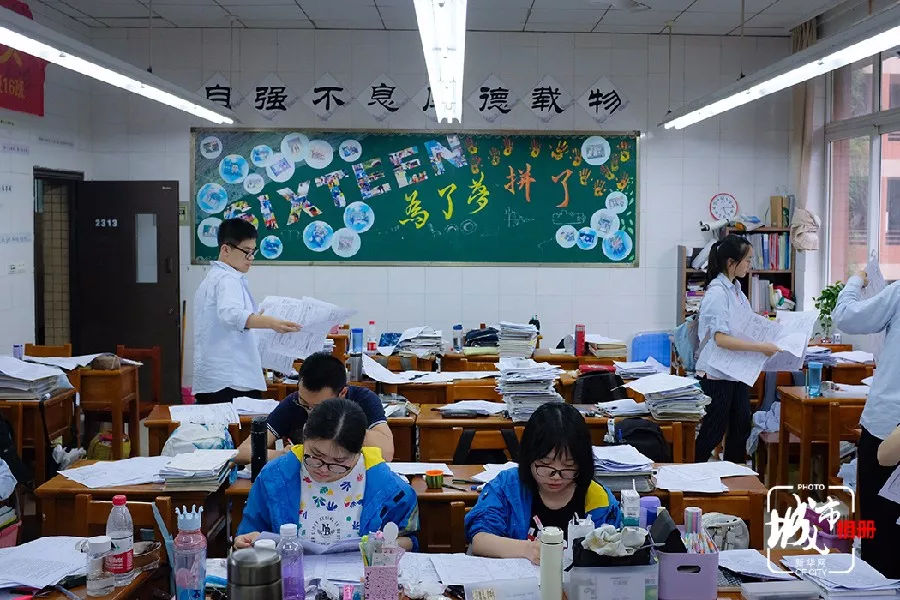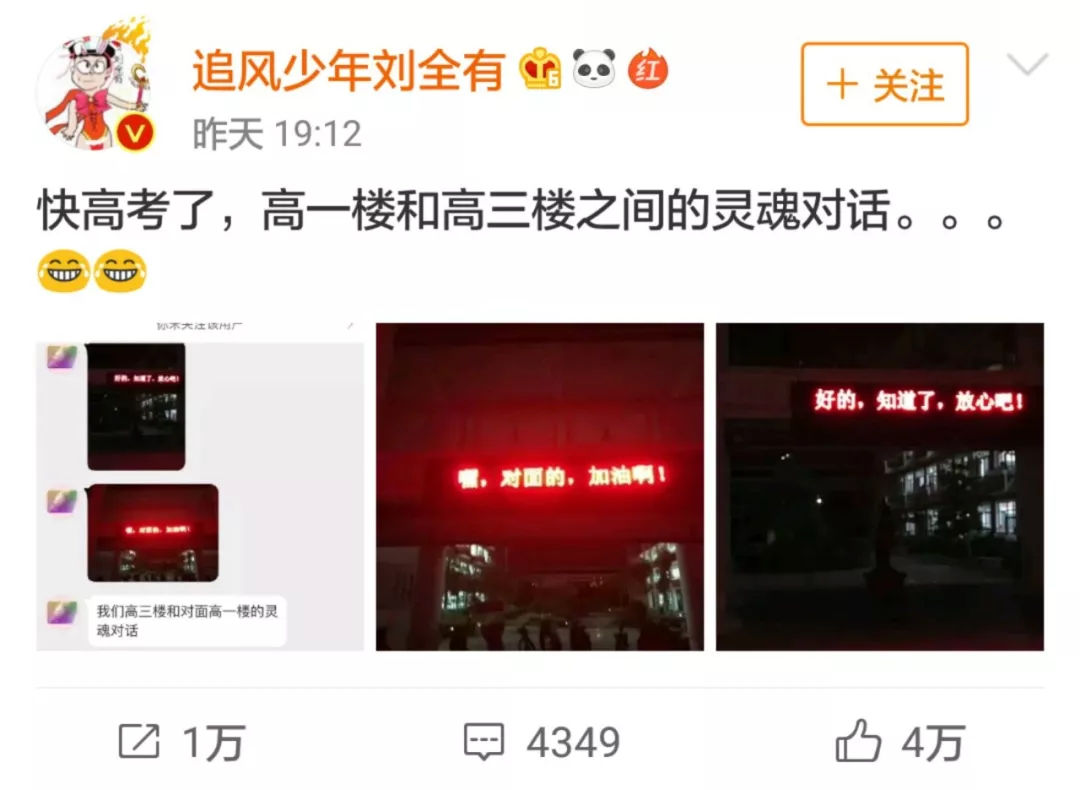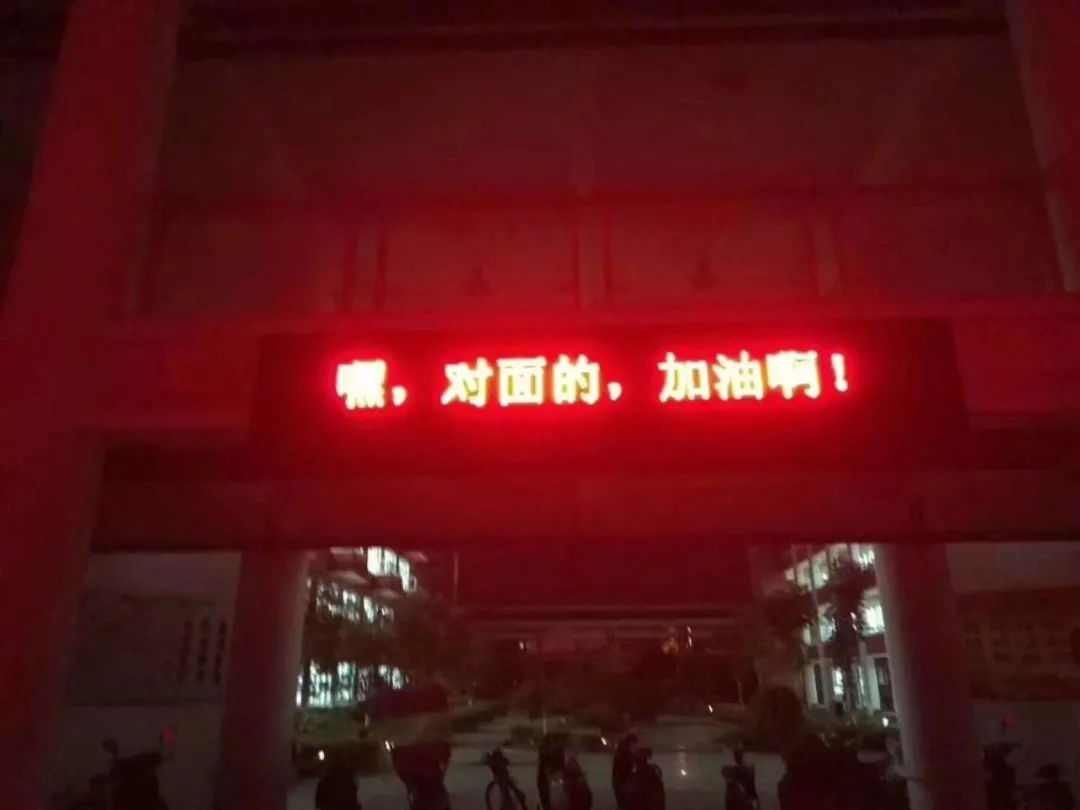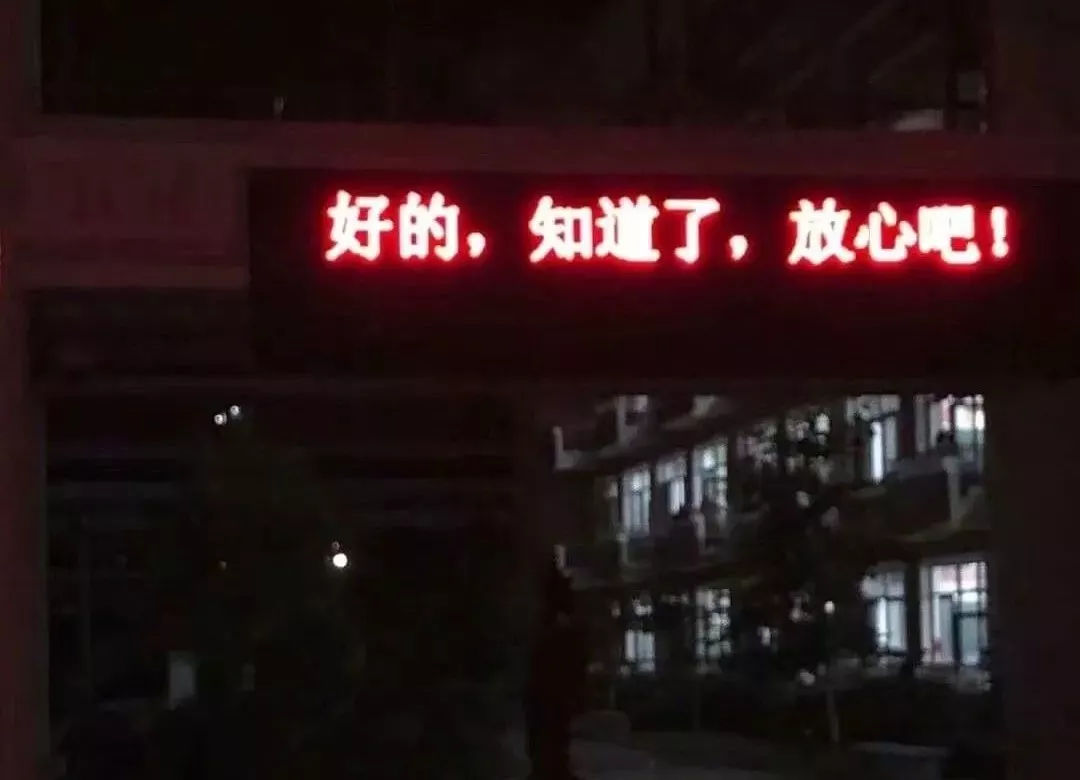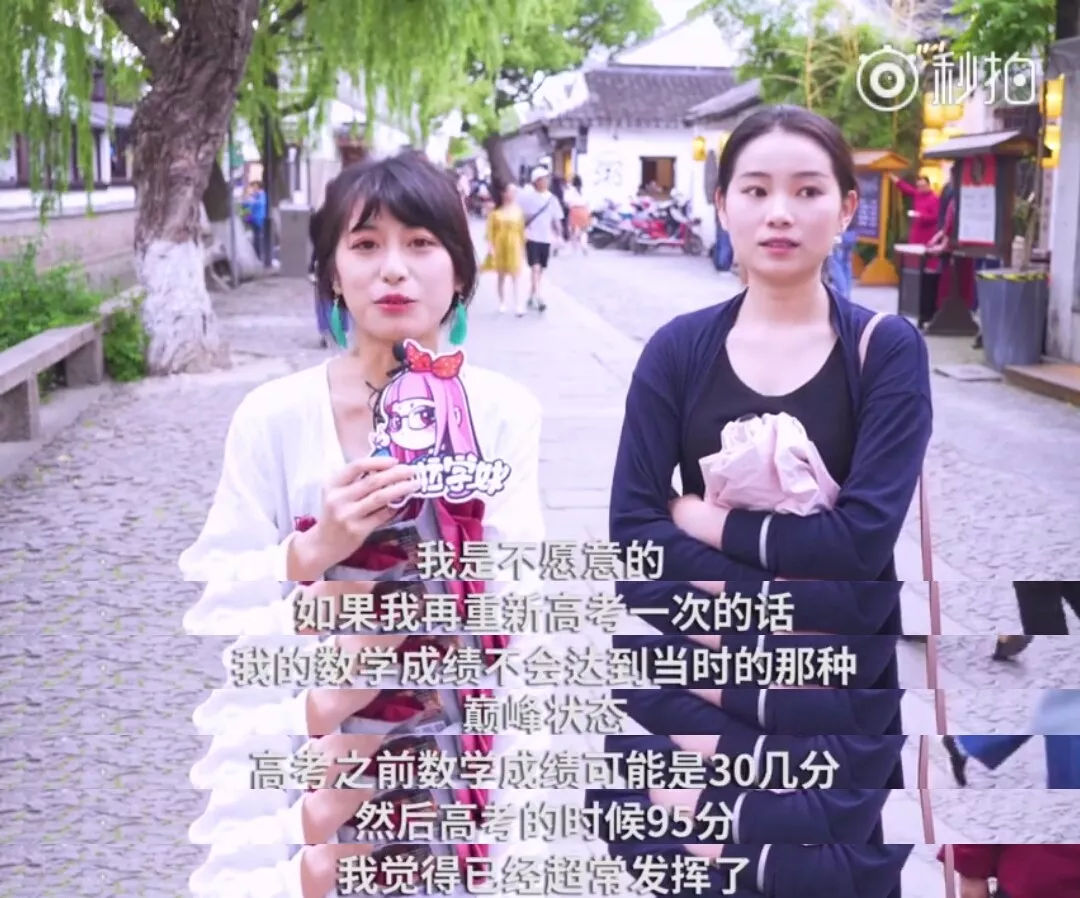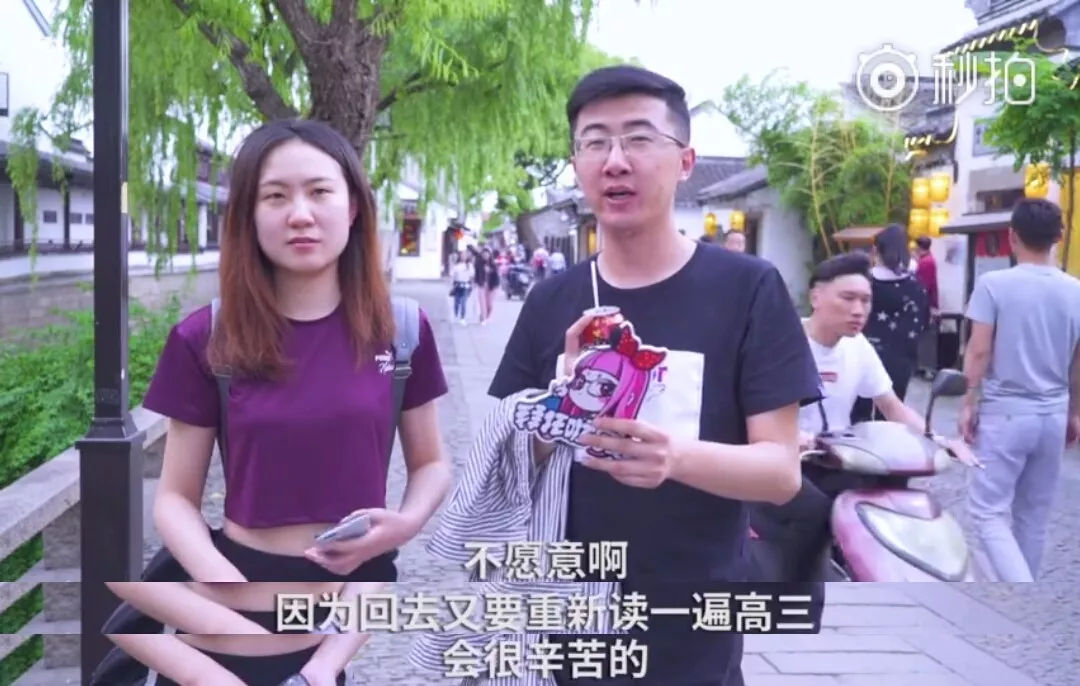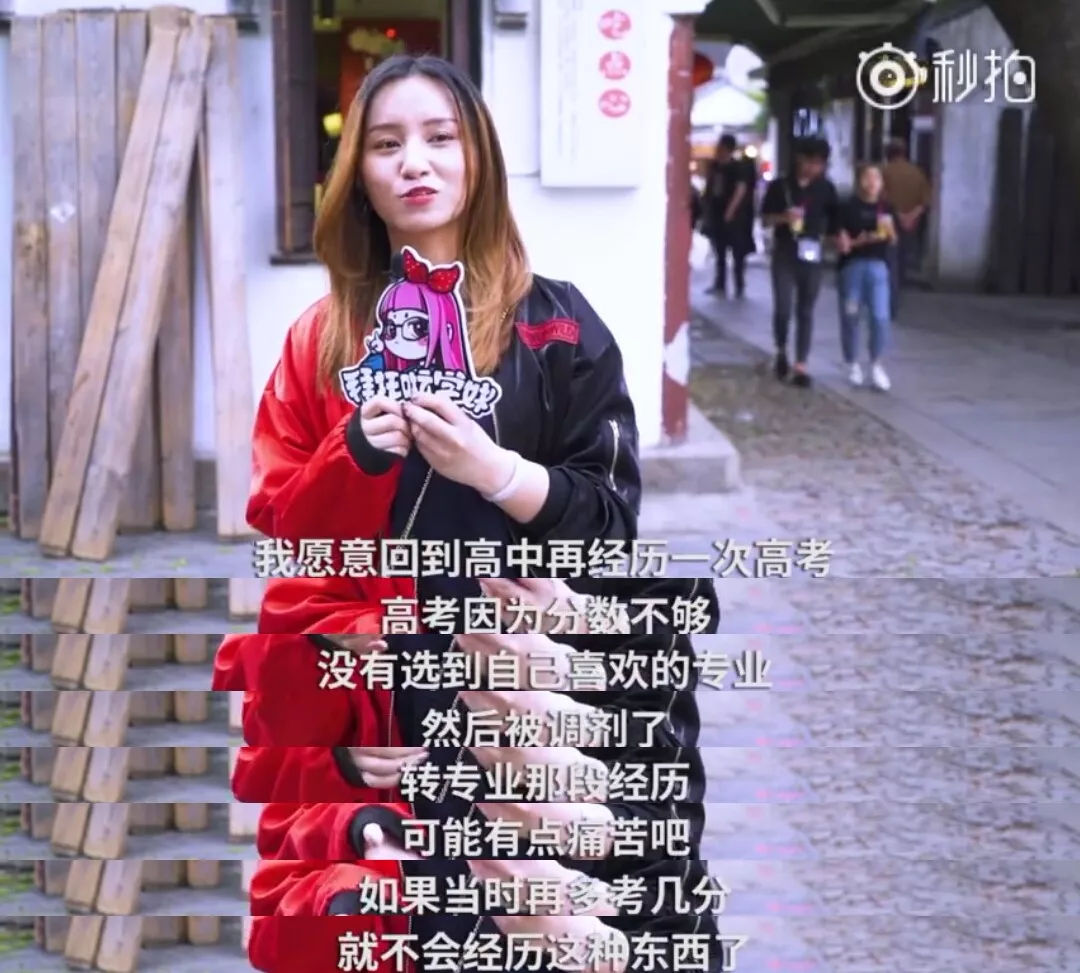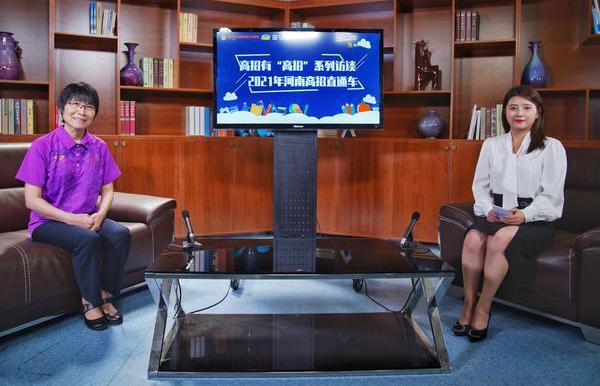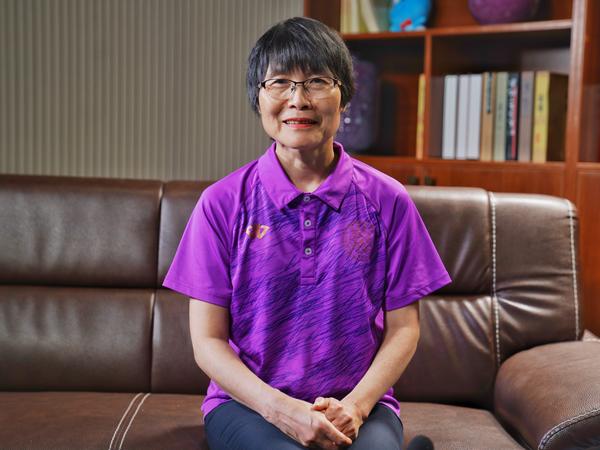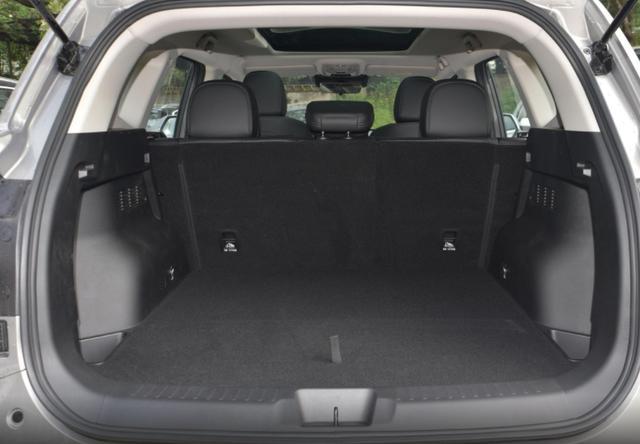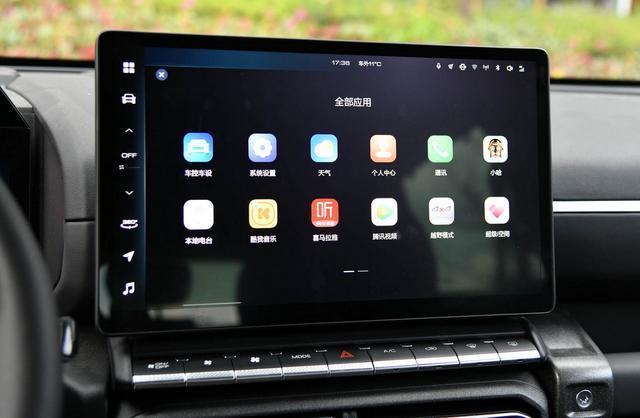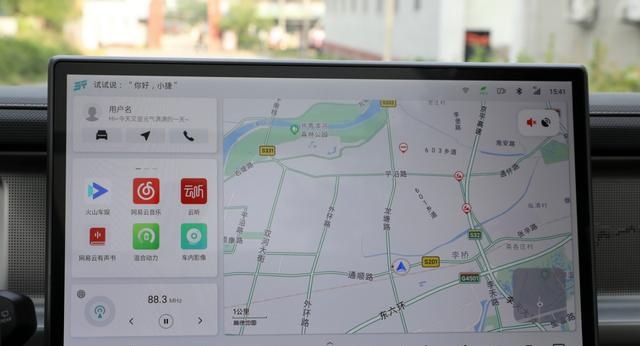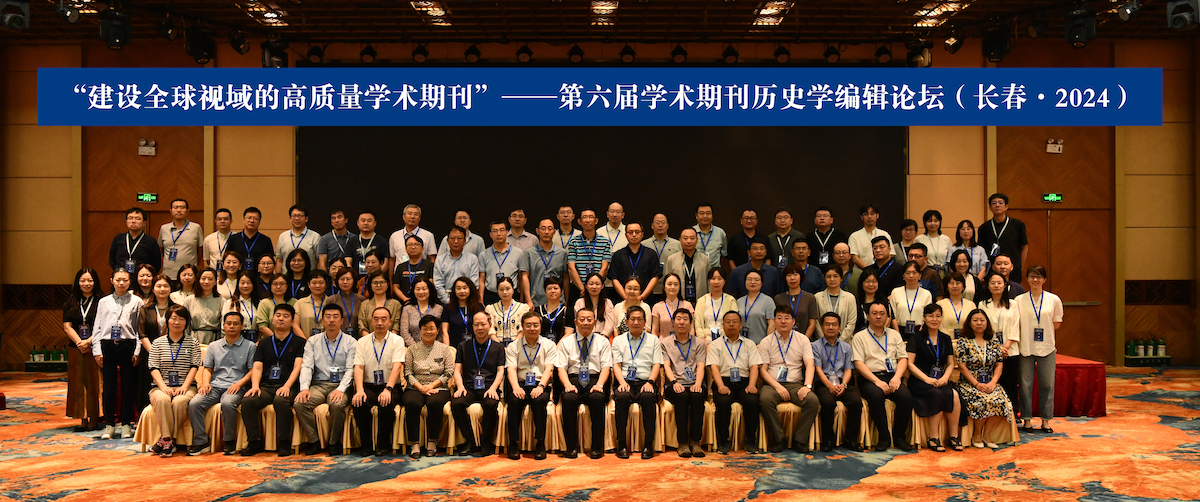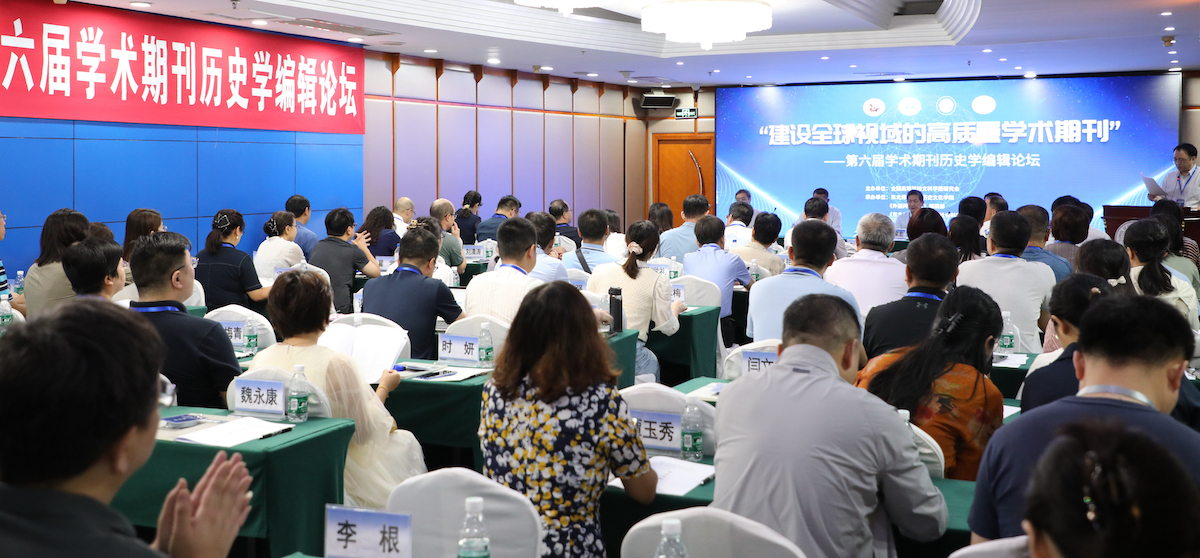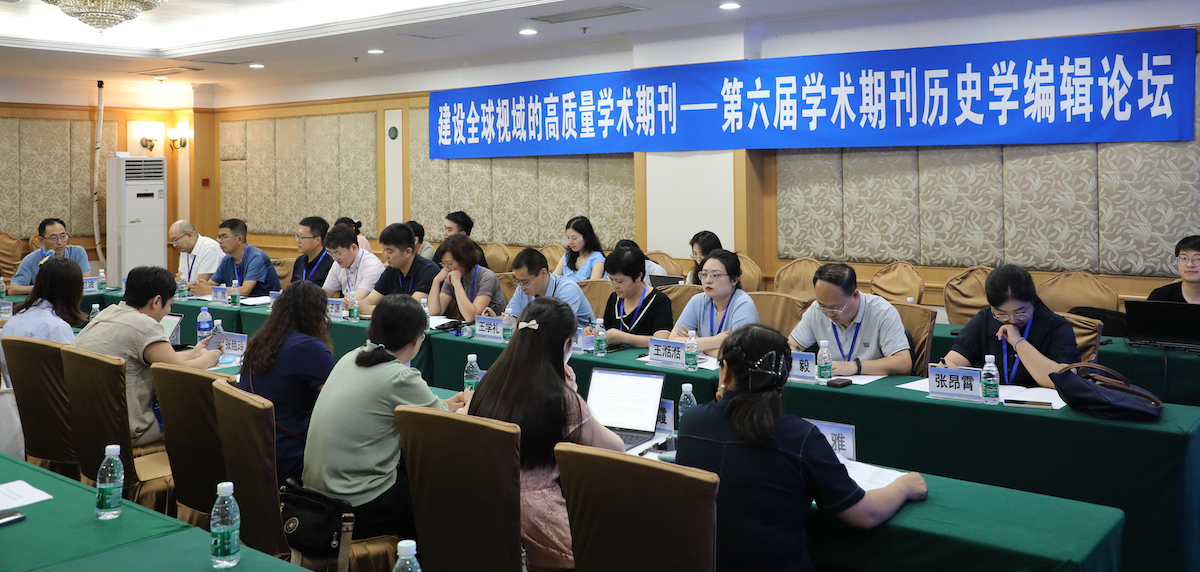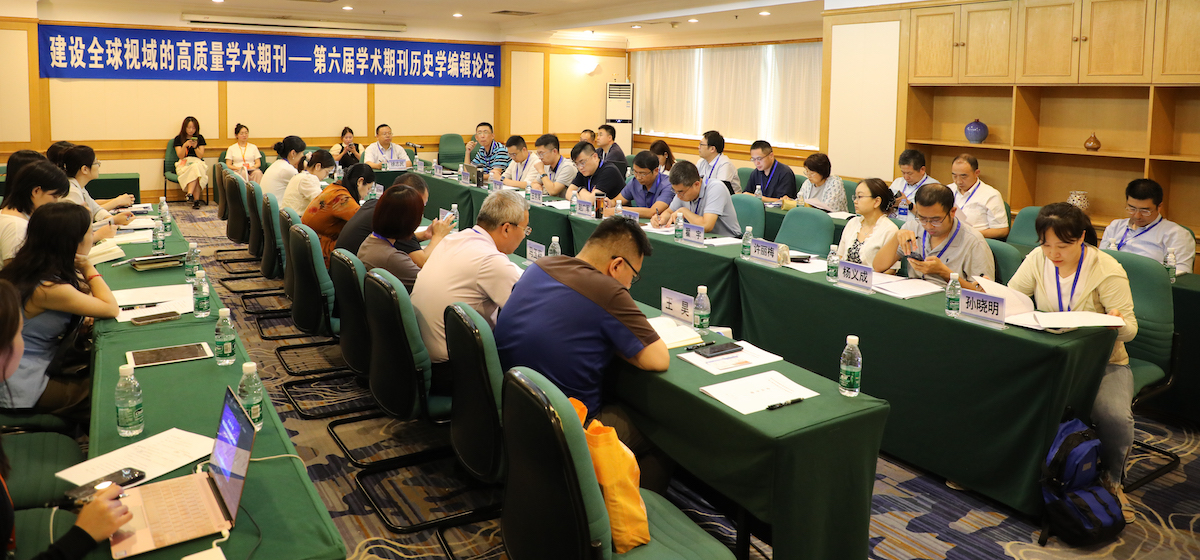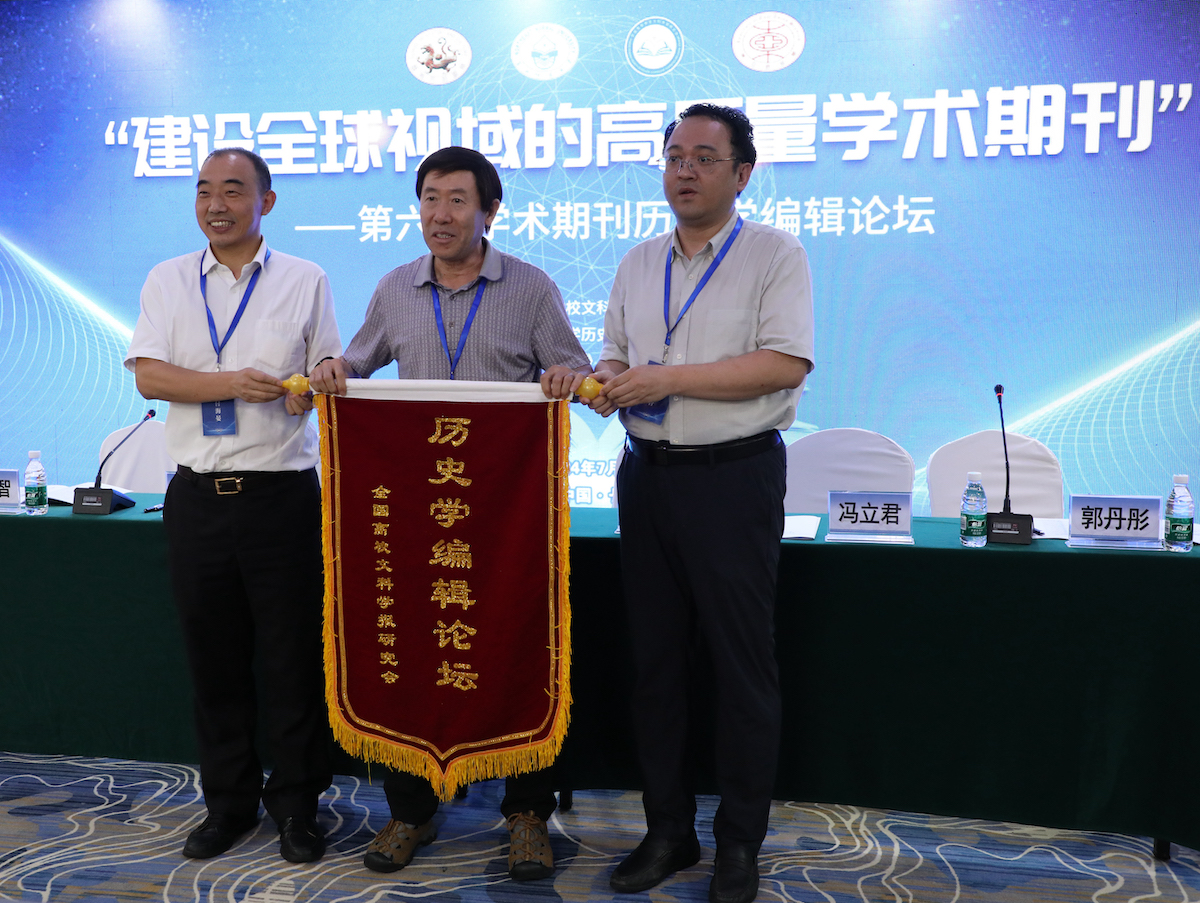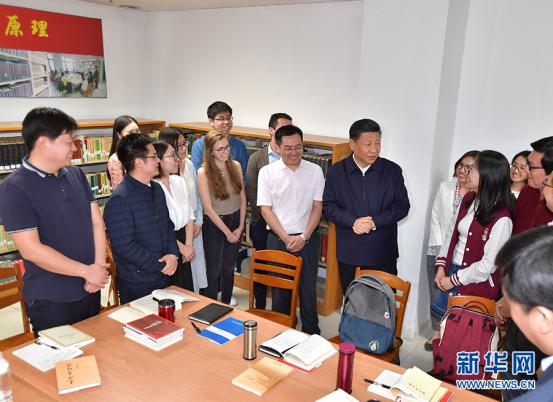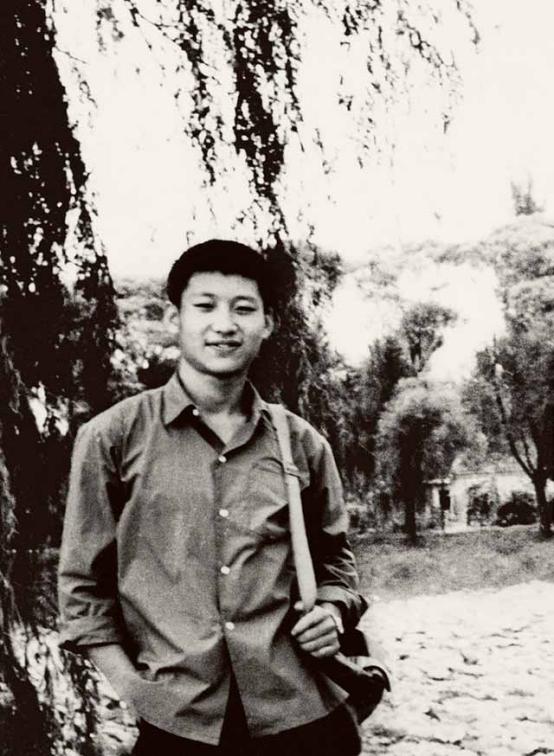Supreme leader
Since 1993, the general secretary of our party has delivered a speech at the plenary session of the Central Commission for Discipline Inspection every year, which shows that the CPC Central Committee attaches great importance to the building of a clean and honest party style and the struggle against corruption. The time of my speech has been adjusted this year. Let me start by saying that in the afternoon, Comrade Wang Qishan made a work report on behalf of the Standing Committee of the Central Commission for Discipline Inspection. The work report was reviewed at the Politburo meeting of the Chinese Communist Party and The Politburo Standing Committee (PSC) meetings, and I fully agree with it. Next, I will talk about four questions.
I. Significant new achievements have been made in building a clean and honest party style and fighting corruption.
Our party shoulders the historical mission of leading the people of all ethnic groups in China to achieve the goal of "two hundred years" and realize the great rejuvenation of the Chinese nation. At the same time, it is also facing "four major tests" and "four dangers". To accomplish the historical mission and overcome the risk challenges, we must manage and cure the Party and ensure that the Party will always be the strong leadership core of Socialism with Chinese characteristics’s cause.
Since the 18th National Congress of the Communist Party of China, our party has focused on the new situation and tasks, incorporated the comprehensive and strict administration of the Party into the "four comprehensive" strategic layout, and made the building of a clean and honest party style and the struggle against corruption an important part of the comprehensive and strict administration of the Party, keeping the wind and discipline clean, fighting corruption and punishing evil, and making efforts to build an institutional mechanism that does not dare to rot, cannot rot and does not want to rot. The Central Commission for Discipline Inspection carried out the decision-making arrangements of the CPC Central Committee, followed the provisions of party constitution, focused on the central task, and made new and significant achievements in promoting the building of a clean and honest party style and the fight against corruption. Mainly in the following aspects.
第一,严明党的政治纪律,夯实管党治党责任。我们坚持党要管党、从严治党,查处周永康、薄熙来、徐才厚、郭伯雄、令计划、苏荣等严重违纪违法案件,强调严明政治纪律和政治规矩,营造了旗帜鲜明讲政治、从严从紧抓纪律的氛围。我们要求各级党委扛起全面从严治党的政治责任,以严肃问责推动责任落实,层层传导压力,强化党员日常管理监督,拧紧管党治党的螺丝。中央纪委通报河南省委查处的新乡市委和市纪委原主要负责人履行主体责任、监督责任不力等一批问题,释放了有责必问、执纪必严的强烈信号。
第二,创新体制机制,扎牢制度笼子。全面从严治党的丰富实践,为党内法规制度创新奠定了坚实基础。我们深入研究探索,汲取全党智慧,坚持依规治党和以德治党相统一,坚持高标准和守底线相结合,把从严治党实践成果转化为道德规范和纪律要求,党内法规制度体系更加健全。我们研究依规治党这一重大课题,坚持纪严于法、纪在法前,实现纪法分开,修订廉洁自律准则、党纪处分条例、巡视工作条例等党内重要法规,制定党委(党组)落实从严治党责任的意见。针对干部管理监督中的薄弱环节,我们完善领导干部报告个人有关事项、加强“裸官”管理等规定,推动制度建设与时俱进。
Third, persistently correct the "four winds" and improve the party style and people’s customs. After the 18th National Congress of the Communist Party of China, when the CPC Central Committee discussed how to strengthen party building, it thought of solving the problem that "the tiger eats the sky and doesn’t know where to start". Later, I decided to grasp the eight rules, and I should really eat and digest that piece in my mouth. I don’t want to eat one mouthful and eat another, but I didn’t digest it in the end. We grasp the main line of work style construction, consistently and step by step. The Political Bureau of the Central Committee starts from itself and forms a good atmosphere with the above rate. We emphasize that the construction of work style must bite the words "constant" and "long", and grasp it frequently, deeply and persistently. We carried out the party’s mass line education practice activities, the special education of "three strictness and three realities", and improved the normalization system of work style. We seize important nodes, keep a close eye on hedonism and extravagance, strengthen daily supervision and inspection, seriously investigate and deal with violations of discipline, resolutely prevent rebound, and promote the party’s work style to continue to improve. We focus on promoting folk customs and social customs with excellent party style, giving full play to the role of excellent party member, cadres and moral models, taking family style construction as an important part of leading cadres’ work style construction, promoting truth, goodness and beauty, restraining false, evil and ugly, creating a social atmosphere of respecting morality and being virtuous and seeing good people in Si Qi, and promoting a marked improvement in social atmosphere.
Fourth, strengthen inner-party supervision and give play to the role of patrolling the sword. We strengthened our leadership over the inspection work, polished the inspection sword, focused on finding problems and forming a shock. The Central Leading Group for Inspection Work conducted eight rounds of inspections, and completed a comprehensive scan of 31 provinces, autonomous regions and municipalities, Xinjiang Production and Construction Corps, key state-owned enterprises in the middle management, and party organizations in financial institutions in the middle management. More than half of the middle-ranking cadres put on file for review by the Central Commission for Discipline Inspection were investigated and dealt with according to the clues of patrol handover. We carry out special inspections, focusing on specific things, specific people and specific problems, promoting the investigation and handling of a number of serious cases of violation of discipline and law, giving public feedback and rectifying the situation, and strengthening the atmosphere of not daring and Zhi Zhi. The problems found in the inspection are shocking, mainly manifested in violation of political discipline, destruction of political rules, violation of party constitution’s requirements, disregard of organizational principles, violation of integrity discipline, serious rent-seeking corruption, repeated bans on "four winds" and frequent violations of discipline. In view of the problems found, we insist on treating both the symptoms and the root causes, focusing on the problems, forcing reform and improving the system. Party committees of all provinces, autonomous regions and municipalities, some central ministries and commissions, and party groups (party committees) of state organs and departments standardized the inspection work, forming a linkage situation from top to bottom. Patrol has become an important support for the comprehensive and strict administration of the party, highlighting the power of the inner-party supervision system.
A large number of cases show that the greater the power, the more likely it is to appear "black under the lamp." To strengthen inner-party supervision, we must first manage the central and state organs well. The supervision of accredited institutions is an important part of the supervision system of the party and the state. We implement the combination of separate accreditation and comprehensive accreditation to realize the comprehensive accreditation of party and state organs at the central level. The accredited institutions have strengthened supervision and accountability, and the authority of the "faction" and the advantages of "resident" have been significantly enhanced.
Fifth, severely punish corrupt elements and strengthen the pursuit and recovery work. "If you hoe one harm, many seedlings will grow, and if you punish one evil, all people will be happy." We insist that corruption must be punished and greed must be eliminated. At the same time, we focus on solving unhealthy practices and corruption problems that occur around the grassroots and the masses, so that positive anti-corruption will bring more sense of gain to the people.
Our unswerving opposition to corruption has enabled us to occupy the international moral high ground. In the past, the United States and other western countries always tried to hold us hostage with anti-corruption issues, and constantly raised the so-called anti-corruption issues in the United Nations, the G-20, APEC and other occasions. Now, we have turned to strategic initiative in one fell swoop in the international arena. We strengthened international multilateral and bilateral cooperation against corruption, launched "Operation Skynet", intensified efforts to pursue and recover, and arrested a group of criminals who had fled for many years. We took the initiative to put forward a series of anti-corruption international cooperation initiatives, and proposed to build a new international anti-corruption order, especially to increase the pressure on the United States and other western countries in anti-corruption cooperation, asking them not to become a "crime-free paradise" for corrupt elements. It turned out that they thought those criminal suspects were their cards, but now they have become hot potatoes in their hands. All parties admire us for daring to show our swords to corruption, and our anti-corruption actions have won the respect of the international community.
People’s heart is the greatest politics, and justice is the strongest force. As the saying goes, "How can the world be governed? Just win the hearts of the people! Why is the world in chaos? Losing people’s hearts! " Social conditions and public opinion are a barometer for observing political issues. Anti-corruption has enhanced the people’s trust and support for the party, and the people have spoken highly of it. In 2015, the results of the questionnaire survey conducted by the National Bureau of Statistics showed that 91.5% of the people were very satisfied or relatively satisfied with the effectiveness of the party’s work style and clean government building and anti-corruption work. According to a questionnaire survey conducted by China Academy of Social Sciences, 93.7% of leading cadres, 92.8% of ordinary cadres, 87.9% of enterprise personnel, and 86.9% of urban and rural residents have confidence in China’s anti-corruption. This once again proves that the building of a clean and honest party style and the struggle against corruption conform to the party’s heart and public opinion, and have a broad and solid political foundation and mass foundation. As long as we don’t relax in managing the party, discipline and discipline, and fight corruption and punish evil relentlessly, we will certainly win this struggle that we can’t afford to lose and never lose!
Second, unswervingly promote the building of a clean and honest party style and the fight against corruption.
The key to winning the great victory in the decisive stage of building a well-off society in an all-round way lies in the party. It is our party’s solemn commitment to "strike while the iron is hot", and it is our military order to strictly manage the party in an all-round way. In the past three years, we have made great efforts to solve the problems of being lenient, loose and soft in managing the party, so as to give full play to the deterrent effect of not daring to rot, and the effect of not wanting to rot has initially appeared, and the overwhelming situation of the anti-corruption struggle is taking shape.
The determination of the CPC Central Committee to firmly oppose corruption has not changed, and the goal of resolutely curbing the spread of corruption has not changed. Comrades of the whole party should have enough confidence in the determination of the CPC Central Committee in the anti-corruption struggle, in the achievements made in the anti-corruption struggle, in the positive energy brought by the anti-corruption struggle, and in the bright future of the anti-corruption struggle!
At the same time, we should also be soberly aware that the situation of building a clean and honest party style and the struggle against corruption is still grim and complicated. Judging from the cases of violation of discipline and law of middle-ranking cadres investigated and dealt with since the 18th National Congress of the Communist Party of China, corrupt elements often combine political transformation, economic greed, corrupt life and arbitrary style. Since the 18th National Congress of the Communist Party of China, the CPC Central Committee has repeatedly stressed that leading cadres should strictly abide by political discipline and rules, but some turned a deaf ear to it, engaging in party-building, clique-building, and group-building, and concentrating on gaining power. Some people know that the organization did not arrange him during the transition, but still sent cronies to lobby for votes and engage in non-organizational activities; Some political ambitions are not small, threatening to "enter Zhongnanhai when alive and Babaoshan when dead"; Some have built "independent kingdoms" in the places where they are in charge, engaged in small hills and small circles, disobeyed the decision-making and deployment of the CPC Central Committee, and resorted to unscrupulous means to realize their personal political ambitions.
These issues are major issues related to the political security of the party and the country. Are they not politics? Do you still need to be evasive and secretive? "Xinsong hates thousands of feet, and evil bamboo should be cut off." If we don’t get rid of all evils, there will be a resurgence and a comeback at the slightest sign, which will not only worsen the political ecology, but also seriously damage the party’s heart and people’s hearts. Some people say that if there is still a rebound and resurgence this time, then the people will be disappointed. Therefore, the military order is not made casually, and we will do it when we say it.
At present, corruption still exists. Some still take chances, engage in circuitous tactics, sell official hats, grant land, grab projects, collect red envelopes, and collect money in a variety of ways, often by millions, tens of millions or even hundreds of millions; Some deceive organizations, confront organizations, hide stolen money and goods, and form an offensive and defensive alliance with relevant personnel in an attempt to escape the punishment of party discipline and state law. They deliberately made some noise in an attempt to confuse the audience and get out of it. "four winds" has converged on the surface, but it has not disappeared. Many leading cadres investigated and dealt with after the 18th National Congress of the Communist Party of China did not stop in hedonism and extravagance. They were greedy for pleasure, ate and drank, feasted and indulged, and still went their own way. Some of the "four winds" problems have been completely changed, with various variations. All kinds of realities show that the task of strictly administering the party in an all-round way is still arduous and must continue to maintain a high-pressure situation.
The overall requirements for building a clean and honest party style and anti-corruption work in 2016 are: fully implementing the spirit of the 18th CPC National Congress and the Third, Fourth and Fifth Plenary Sessions of the 18th CPC Central Committee, coordinating and promoting the "four comprehensive" strategic layout, maintaining a strong political determination, adhering to the principle of strictly administering the party in an all-round way, faithfully performing the duties entrusted by party constitution, focusing on supervision and accountability, addressing both the symptoms and root causes, innovating institutional mechanisms, improving laws and regulations, strengthening inner-party supervision, and maintaining discipline. Persistently implement the spirit of the eight central regulations, focus on solving unhealthy practices and corruption problems around the masses, resolutely curb the spread of corruption, build a loyal and clean discipline inspection and supervision team, and continuously achieve new results in building a clean and honest party style and fighting corruption.
To do a good job this year, we should focus on the following points.
First, respect party constitution and strictly implement the norms and regulations. To strictly manage the Party in an all-round way, we must first respect party constitution. Party constitution’s general program clearly puts forward that "the Party should be in charge of the Party and strictly manage the Party", which is the fundamental policy of Party building. Article 37 of party constitution stipulates that "Party organizations must strictly implement and maintain the Party’s discipline", which is a specific requirement for the main responsibility. Party committees at all levels should keep up with the strategic plan of strictly administering the party in an all-round way in terms of ideological understanding, methods and measures, and put discipline ahead. When they find problems, they must lift their collars and pull their sleeves, so that blushing and sweating become the norm. If the problem is serious, it is necessary to slap the hand and sound the alarm, the organization will handle it, and the disciplinary action will be taken. As the first responsible person, the party secretary should shoulder the political responsibility of strictly administering the party in an all-round way.
Don’t do it because of the small good, and don’t do it because of the small evil. How many people can avoid breaking the law if they bite their ears and pull their sleeves from the beginning and grasp the discipline very tightly? In the past, there was a phenomenon that everyone could be "tolerant" and "tolerant" until it was illegal, and let him go when it was illegal. This is irresponsible to the party and cadres. Comrades in the air force say that it takes gold equivalent to the weight of a pilot to train him. How much does it cost us to train a provincial and ministerial cadre? Many cadres started at the grass-roots level, grew up slowly, and were finally destroyed once, and one slip of the foot became an everlasting regret. People who have problems will have signs before, so why not help them understand and solve the problems in time? This requires putting discipline ahead.
The Code of Integrity and Self-discipline in the Communist Party of China (CPC) and the Regulations on Disciplinary Actions in the Communist Party of China (CPC), which came into effect in January this year, have clearly defined the high standards that party member pursues and the yardstick for managing the Party. With the ruler of discipline supervision, we must work hard to implement it. Party committees and discipline inspection commissions at all levels should first strengthen supervision and inspection on the maintenance of party constitution and the implementation of the Party’s line, principles, policies and resolutions, focusing on the implementation of the spirit of the 18th National Congress of the Communist Party of China and the Third, Fourth and Fifth Plenary Sessions of the 18th National Congress, and the implementation of the major decision-making arrangements of the CPC Central Committee, so as to ensure the centralization and unity of the Party and the smooth implementation of the Party Central Committee’s decrees.
Power comes with responsibility, and power and responsibility should be equal. Accountability can’t be emotional, can’t have compassion, and should be "true" and "challenging" to play a deterrent effect. The year before last, we were seriously accountable for the case of destroying the election by bribery in Hengyang, Hunan Province, and gave 467 people disciplinary sanctions and transferred them to the judicial organs for handling 69 people. Last year, we conducted a thorough investigation into the election case of canvassing and bribery in Nanchong, and severely dealt with all 477 people involved. These two cases are extremely bad in nature and challenge our party and socialist democratic system. Resolutely investigate and deal with these cases and implement strict accountability, which reflects a clear attitude of dereliction of duty and strict discipline. This year, the local leadership team began to change, and it is necessary to be serious about political discipline and organizational discipline, do a good job of accountability, increase supervision and investigation, and ensure that the change is clean and tidy. In any place, department or unit, problems such as the party’s leading role is not brought into play, the party’s line, principles and policies are out of shape, the party is not strictly managed, the selection and employment are neglected, serious "four winds" and corruption occur, and the inspection and rectification are ineffective, etc., so we must seize the typical and serious accountability. Not only shall the main responsibility and supervision responsibility be investigated, but also the leadership responsibility and party organization responsibility shall be investigated at the first level. It is necessary to improve and standardize the work of accountability, establish and improve the notification system for typical problems of accountability, combine accountability with other supervision methods, promote the performance of duties in place with the normalization of accountability, and promote the implementation of party discipline.
Second, persist and persist, and grasp the construction of work style to the end. The problem of style is essentially a problem of party spirit. For us in communist party, whether we can solve the problem of work style is a very important ruler to measure our faith in Marxism, socialism and communism, and loyalty to the party and the people. We should not only use iron discipline to rectify all kinds of violations of discipline against the wind, but also keep our eyes open and let unhealthy trends change, and we should also find them out and deal with as many as possible. Grasping the construction of work style should return to nature, consolidate the foundation and cultivate yuan, and carry forward the excellent Chinese traditional culture while strengthening the cultivation of party spirit.
Here, I also want to emphasize the family style. Judging from the corruption cases investigated in recent years, the deterioration of family style is often an important reason for leading cadres to seriously violate the law and discipline. Many leading cadres not only engage in power and money transactions in the former Taiwan University, but also condone their families to collect money behind the scenes. Children and others also use their parents to influence business to make profits and make ill-gotten gains. Some people use their "contacts" and "face" accumulated in politics for many years to make illegal profits for their children, and their harm cannot be underestimated. The ancients said: "If you teach the world, you must be at home, and you must be right." "Don’t use the third master, waste your job and die." "Mind should not offend heaven and earth, and words and deeds should be good for children and grandchildren."
In cultivating a good family style, the older generation of revolutionaries set an example for us. Every leading cadre should put the construction of family style in an important position, be honest and self-cultivation, be honest and tidy, and strictly demand his spouse, children and staff around him while managing himself well. Years ago, at the special democratic life meeting in the Political Bureau of the Central Committee, I specifically emphasized this issue. I said, I’m here to earnestly enjoin you to fuck this snack. Sometimes things at home may slip away inadvertently, so you should be careful not to delay, and don’t protect calves. Cadres’ children should also abide by the law. Don’t think that cadres’ children can’t help anyone. Violation of party discipline and state laws should be dealt with, and it should be dealt with strictly and shown to the people.
For those complicated problems that are intertwined, problems left over from time immemorial, and inertia problems that have been formed for a long time, we should persevere, overcome difficulties, and do good deeds with the perseverance of swallows, the tenacity of ants gnawing bones, and the hard work of old cows climbing mountains.
Third, we should realize that we dare not rot and resolutely curb the spread of corruption. Whoever dares to engage in corruption must pay the price. A towering tree, if allowed to be bitten by moths, will eventually wither gradually. To punish corruption, we must hold fast to it, hold the sword high, and insist on no forbidden zone, full coverage and zero tolerance. It is necessary to focus on investigating and dealing with leading cadres who are intertwined with political issues and corruption, do not stop until they converge, and have concentrated clues and strong reactions from the masses. They are now in important positions and may be promoted and used. It is necessary to thoroughly analyze the typical cases of cadres who violate the law and discipline seriously, and play a warning, deterrent and educational role.
It is necessary to intensify international efforts to pursue the pursuit of the memorial, promote international cooperation under multilateral frameworks such as the G20, the Asia-Pacific Economic Cooperation and the United Nations Convention against Corruption, and implement major special actions to spread tight encirclement, which punishes corruption, all over the world, leaving those who have absconded with nowhere to hide and those who attempt to flee with no illusions.
Fourth, promote the comprehensive and strict administration of the party to the grassroots level. At present, the mainstream of grass-roots cadres is good, but in some places, departments and units, unhealthy practices and corruption of grass-roots cadres are prone to occur frequently, in large quantities and in a wide range. Some engage in plucking geese, dig their brains to falsely claim, deduct or even occupy special funds for benefiting farmers and poverty alleviation funds; Some of them treat their relatives and friends well, eat and get cards in relief and subsidies; Some are above others, ignoring the sufferings of the masses, and formalism and bureaucracy are serious; Some of them enforce the law unfairly, and even become spokesmen of family forces and evil forces, running rampant in villages and bullying the people.
Compared with the "tiger" far away from the horizon, the masses feel more real about the "fly greed" buzzing around in front of them. "Micro-corruption" may also become a "great scourge", which damages the vital interests of the people, gnaws at the people’s sense of gain, and squanders the grassroots’ trust in the party. Problems such as grassroots corruption and unfair law enforcement should be seriously corrected and seriously investigated, so as to safeguard the vital interests of the masses and let them feel more about the actual results of fighting corruption and promoting honesty.
The county party committee is the "first-line headquarters" of our party in governing and rejuvenating the country, and the secretary of the county party committee is the "first-line commander in chief". Party committees at the provincial and municipal levels should implement the main responsibility and do a good job of the county party committee, especially strengthen the responsibility of the county party committee secretary, strengthen the construction of grassroots organizations and cadres, build grassroots party organizations into a strong fighting fortress, and give full play to the vanguard and exemplary role of party member and cadres.
Fifth, treat both the symptoms and root causes and purify the political ecology. If the political ecology is good, people’s hearts will be smooth and upright; If the political ecology is not good, people will be distracted and ill. At present, some localities and departments are not upright and evil spirits are not removed; "Ming rules" exist in name only, and "hidden rules" are popular; Those who are pragmatic and hard-working are excluded, and those who are eager for success and quick success are like a duck to water. If this ethos is not corrected or reversed, it will do great harm to the cadre team. "It’s easy to pour the wind, but it’s hard to return." Purifying the political ecology, like restoring the natural ecology, is by no means an overnight achievement, and it requires comprehensive policy and coordinated promotion.
Leading cadres at all levels, especially senior cadres, should start from themselves and give a good start to their subordinates. The Chinese nation has always had a tradition of cherishing honor, paying attention to ethics and being a clean official. It has always been said that "governing the country with morality" and "guarding the land with responsibility". Leading cadres should use their power impartially and incorruptibly, and be a model of obeying the law. At the same time, they should adhere to principles and dare to grasp and manage. We must adhere to the correct orientation of employing people, select and use good cadres, and promote the promotion of the able, the mediocre and the inferior. It is necessary to grasp the establishment of rules and regulations, establish "clear rules" and break "hidden rules", find loopholes around corruption cases, learn lessons, focus on improving the inner-party political life and other aspects of the system, reduce the living space and breeding ground for negative corruption, and promote the continuous improvement of political ecology through institutional mechanism reform and institutional innovation.
Third, unswervingly promote the comprehensive and strict management of the party
It is the consistent requirement and fundamental policy of party building that the party should manage the party strictly. Now, some comrades in the party feel uncomfortable, and some say that they are too strict and too rigid, which has bound their hands and feet; Some say that party member and cadres also have worldly desires, and managing the party should be "humanized"; Some say that they are all trying to manage the party, and they have no energy to grasp economic and social development. To put it bluntly, I just want to be looser and wider. In December 2012, when I was deliberating the eight regulations in Politburo meeting of the Chinese Communist Party, I said that if we were a little uncomfortable and uncomfortable, the people’s comfort would be better, their satisfaction would be higher, and they would feel better about us. In The Book of Songs, it is said that "fear is like walking on thin ice", that is to say, the bigger an official is, the more cautious he should be. This has always been the case, and every party member and cadre, especially leading cadres, should understand this truth.
Strictly administering the party in an all-round way is always on the road. Recently, the inspection found that some party organizations and leading cadres have a weak concept of the party, separating economic construction from party leadership and being absent-minded about managing the party; Some only pay attention to power, not to supervision, and when appointing cadres, they do their part, but they usually let their own flow, and when something goes wrong, they give it to the commission for discipline inspection; Some principles are not strong, they do not resist and fight against bad style, blindly cover up their ugliness and protect their weaknesses, and even excuse the offenders; In some places, party committees do not pay attention to overall planning and overall planning, party building is departmental, and "railway police are in charge of each section", and so on. The existence of these problems has weakened the creativity, cohesion and combat effectiveness of the party and must be solved.
First, party organizations at all levels should shoulder the responsibility of strictly administering the party in an all-round way. To strictly manage the party in an all-round way, the core is to strengthen the party’s leadership, the foundation is comprehensive, the key is strict, and the key is governance. "All-round" means managing the whole party, facing more than 87 million party member and more than 4.3 million party organizations, covering all fields, aspects and departments of party building, with the focus on grasping the "key minority". "Strict" means strict management, daring to be strict, and long-term management. "Governance" means that from the CPC Central Committee to the provincial, city and county party committees, from the central ministries and commissions, party groups (party committees) of state organs and departments to grass-roots party branches, all should shoulder the main responsibility, and party committee secretaries should take party building as their duty and must take responsibility; Disciplinary committees at all levels should shoulder the responsibility of supervision, dare to stare at the black face and be brave in discipline and accountability. Over the past three years, the practice of strictly administering the party has tried to show that people’s hearts are in the opposite direction, and we must persist in it so that the party can be truly managed from lenient and soft to strict and hard.
It is the responsibility of party organizations at all levels to strictly manage the party in an all-round way. It is not only a literal change, but also the development of practice and the deepening of understanding from the main responsibility of building a clean and honest party style to the comprehensive and strict management of the party’s main responsibility. Building a clean and honest party style and anti-corruption work is a part of strictly administering the party in an all-round way. Party building must be comprehensive and strict, and party organizations at all levels and their responsible persons are responsible subjects.
The key to implementing the main responsibility is to implement the party’s leadership. Party organizations at all levels should firmly establish the concept that no matter whether the party runs the party, it is a serious dereliction of duty, and embody the party’s leadership in all aspects of work. It is necessary to embody the leadership of the Party in daily management and supervision, dare to be serious, pay attention to daily life, grasp early and small, prevent slow progress, reflect strict requirements of the organization and care for it, and never sit back and watch your comrades slide further and further on the wrong road. The party secretary should be the secretary in charge of the party, be the first responsible person, be responsible for the party, be responsible for the political ecology of the unit in the region, and be responsible for the healthy growth of cadres. It is necessary to transfer the responsibility to all team members and pressure the secretary below to ensure that the responsibility is implemented.
Second, put discipline construction in a more prominent position. In 1859, in a letter to Engels, Marx pointed out: "Party discipline must be absolutely maintained, otherwise nothing will be achieved." Numerous cases have proved that party member’s "breaking the law" all started with "breaking the discipline". Only by putting discipline ahead, insisting that discipline is strict with the law and discipline is before the law, can we overcome the abnormal situation that "violation of discipline is only a minor matter, and it is illegal to deal with it" and control all party member with discipline. During this period, we were serious about the Party’s discipline, and many cadres never adapted to it, from disbelief to belief, from passivity to initiative, calibrated the standard of thought, adjusted the rudder of behavior and tightened the string of style. This is a good sign.
To strengthen discipline construction, first, we should improve the system, follow party constitution as the fundamental principle, formulate new laws and regulations, improve existing laws and regulations, abolish unsuitable laws and regulations, improve the system of inner-party rules, and tighten the cage of party discipline and rules. Second, it is necessary to carry out in-depth discipline education, strengthen study publicity and education, make party member and cadres enhance their sense of discipline, impress party constitution’s party rules and regulations on their hearts, and form a good habit of respecting party constitution and observing party discipline. Third, we should pay close attention to discipline supervision, take discipline as a ruler to measure the behavior of party member and cadres, and investigate and deal with disciplinary problems as soon as they are found, so as to improve the execution of discipline and maintain the seriousness of discipline. Fourth, we should cultivate discipline consciousness, educate and guide party member and cadres, especially leading cadres, to strictly follow the party constitution standards, know the boundaries and the bottom line, turn heteronomy requirements into internal pursuits, consciously set an example and play an exemplary role.
It is our party’s consistent policy to learn from the past and save lives, and it is also our party’s historical experience in strengthening its own construction. If you find problems in your daily work, you should be really strict. Punishment, governance is fundamental, and punishment is for governance. It is necessary to strengthen discipline construction and discipline inspection, control discipline and power, and make cadres strive for high standards and not make or make fewer mistakes, especially serious ones. This is the greatest concern and love of the party organization for party member and cadres.
Third, strengthen the political vigilance and political discrimination of leading cadres. Political issues are fundamental and big issues at any time. To strictly manage the party in an all-round way, we must pay attention to political requirements and be strict in political discipline. In particular, leading cadres at all levels should always tighten the string of political discipline, adhere to the party’s leadership unswervingly, implement the party’s line, principles and policies unequivocally, and always be politically savvy. A large number of facts show that it is dangerous to relax vigilance and lower requirements in political discipline. Emphasizing political discipline is not general, but realistic and targeted. Some party member and cadres wavered in their positions on major issues of principle, disobeyed the demands of the CPC Central Committee’s decision-making and deployment, and even engaged in unorganized activities, and publicly published the opposition party’s line, principles, policies and resolutions; Some party organizations feel that political discipline is "soft" and "virtual", and they don’t care, report, resist or fight against the wrong words and deeds that violate political discipline, let alone investigate and deal with them. We demand that party member and cadres should not talk about the Central Committee in vain, not to say that they should not put forward opinions and suggestions or even critical opinions, but that they should not oppose the Party Central Committee and engage in political liberalism on major political principles and major issues of right and wrong.
State affairs are selfless, politics and politics are evil, and the law does not tolerate feelings. We must strictly manage the Party in an all-round way and strictly observe the Party’s discipline. We must never avoid political issues, and we must understand political hidden dangers from a political height. There are careerists and conspirators in the party, which erode the party’s ruling foundation from the inside. We can’t throw the mouse at the boat. As far as Wang Gu is concerned, he adopts the ostrich policy, which must be made clear. The whole party must stress politics, put political discipline in the first place, eliminate hidden dangers and put an end to future troubles.
I have talked about the problem of "two-faced people", and a large number of cases show that some people in the party have outstanding problems in this regard. Some people don’t really practice self-cultivation, don’t really believe in their beliefs, are very good at camouflage, and like to perform shows. They are duplicitous, deceiving their superiors and deluding their subordinates, saying one thing and doing another, on stage and off stage, face to face and behind, and their wrists are very high; In some public occasions, party member and cadres should be firm in their ideals and beliefs, secretly disrespectful to the people and ghosts, and believe in Feng Shui and superstitious "masters"; Some verbally expressed their unwavering anti-corruption, and secretly did not ask questions or report clues about leading cadres; Some people are "honest" and "honest", but privately they are crazy about collecting money. This duplicity of "two-faced people" is very harmful to the cause of the party and the people, and they must be identified and eliminated in time.
Cadres at all levels, especially leading cadres, should be good at looking at problems from a political perspective, stand firm and aim at the right direction. We must always be loyal to the party, carry out the party’s line, principles and policies to the letter, and consciously maintain a high degree of consistency with the CPC Central Committee ideologically and politically; Always be honest with the organization, believe in the organization, rely on the organization, obey the organization, and consciously accept organizational arrangements and discipline; Always treat power correctly, be determined to do good things and practical things for the people, and work for the party in a safe way; Always bear in mind political responsibilities, be frank, match words with deeds, and consciously safeguard the party’s image. Party organizations at all levels should take the violation of political discipline as an important part of discipline review, drive other disciplines to be strict, and resolutely safeguard the party’s centralization and unity.
Fourth, adhere to the combination of high standards and the bottom line. To strictly manage the party in an all-round way, we should not only pay attention to standardizing punishment and strict discipline bottom line, but also guide people to be good and upward, and give play to the leading role of ideals, beliefs and moral sentiments. "The master of the body is the heart"; "Can’t win the heart, Ann can win the sky". "Ben" is in people’s hearts, and inner purification and high ambition will have infinite power. For communist party people, if they shake their faith, deviate from the party spirit and lose their purpose, they may be caught in the "hunting". Only by working hard to establish a solid foundation can bad style be prevented from being possessed by close quarters.
Party organizations at all levels should educate and guide party member and cadres to strengthen their ideals and beliefs, adhere to the "three self-confidences", adhere to the spiritual pursuit of communist party people, and build a solid ideological and moral defense line against corruption and degeneration. We should pay attention to the ideological trends and work performance of party member and cadres, as well as their life style and interest, and guide and correct them in time when problems are found. It is necessary to improve the methods of assessment, evaluation and selection of cadres, pay attention to both ability and conduct, political achievements and political morality, so that cadres with good moral character will be praised and reused, and cadres with poor moral character will be alerted and punished.
Fourth, actively explore effective ways to strengthen inner-party supervision
For our party, external supervision is necessary, but fundamentally speaking, it lies in strengthening self-supervision. We should sum up experience and lessons, innovate management system and strengthen inner-party supervision.
Adhering to democratic centralism is the core of strengthening inner-party supervision. At present, the problems of insufficient concentration within the party and insufficient democracy coexist. Some are weak and lax, go their own way, and the implementation of the party’s line, principles and policies is not in place; Some arbitrary, patriarchal, "centralized", individuals above the organization, inner-party democracy is not fully guaranteed, and the power of leading cadres, especially the top leaders, is not effectively restricted. You can’t "you have your closing plan, I have my jumping method". To strengthen inner-party supervision, we must adhere to, improve and implement democratic centralism, organically combine centralism on the basis of democracy with democracy under centralized guidance, fully mobilize the supervision of superiors to subordinates, among peers and subordinates to superiors, and ensure that inner-party supervision is implemented and effective.
First, improve the supervision system and do a good job in the top-level design of the supervision system. The party must manage the party strictly, and both "management" and "governance" include supervision. The supervision of the Party Committee is all-round, including criticism and education, organization and handling, and disciplinary action against party member. The Party Committee should appoint cadres, but also supervise them. The focus of the supervision of the Commission for Discipline Inspection is to perform the duties of supervision and accountability. Inner-party supervision is the task of the whole party, and the first is the supervision of the party Committee. When it comes to supervision, we can’t just think of the Commission for Discipline Inspection or push it to the Commission for Discipline Inspection.
Our party is in power in an all-round way, from legislation, law enforcement to justice, from central ministries to local and grass-roots units, all under the unified leadership of the party. Party member accounts for more than 80% of the civil servants in China, and party member accounts for more than 95% of the leading cadres at or above the county level. Therefore, it is the proper meaning of inner-party supervision to supervise the correct and honest use of power by state civil servants. It is necessary to do a good job in the top-level design of the supervision system, which not only strengthens the party’s self-supervision, but also strengthens the supervision of the state machine.
In the current inner-party supervision regulations, the subject of supervision is scattered, the responsibility of supervision is not clear enough, and the operation and effectiveness of the supervision system are not strong. It is necessary to design and construct a system around the responsibility, strengthen the supervision of higher-level party organizations over lower-level party organizations, party member and leading cadres, make the responsibility clear, the subject clear, the system effective and effective, strengthen the connection with other laws and regulations within the party, and establish the institutional framework.
Since the 18th National Congress of the Communist Party of China, we have investigated some typical examples of accountability, which shows that the power must be responsible, the responsibility must be taken, and the dereliction of duty must be investigated, thus promoting the implementation of the "two responsibility". At present, a problem is that there are too many administrative accountability such as grasping safety accidents, too little accountability for grasping and managing the party, and the accountability regulations are scattered and the content is not focused. It is necessary to integrate the accountability system, improve the accountability mechanism, adhere to the principle that responsibility must be asked and accountability must be strict, organically combine supervision and inspection, target assessment and accountability, and realize the institutionalization and proceduralization of accountability content, objects, matters, subjects, procedures and methods.
The administrative supervision law should reflect the spirit of the CPC Central Committee that the Central Commission for Discipline Inspection and the Ministry of Supervision should work together, and that the Central Commission for Discipline Inspection should perform the two functions of party discipline inspection and government administrative supervision, and be fully responsible to the CPC Central Committee. The object of supervision should cover all civil servants. It is necessary to uphold the Party’s unified leadership over building a clean and honest party style and anti-corruption work, expand the scope of supervision, integrate supervision forces, improve the organizational structure of state supervision, and form a state supervision system that comprehensively covers state organs and their civil servants.
Strengthening inner-party supervision is to ensure that the party builds the party for the public and governs for the people, strengthening state supervision is to ensure that the state machine performs its duties according to law and uses its power impartially, and strengthening mass supervision is to ensure that power comes from and serves the people. It is necessary to combine inner-party supervision with state supervision and mass supervision, and coordinate with legal supervision, democratic supervision, audit supervision, judicial supervision and public opinion supervision to form a joint force of supervision and promote the modernization of the national governance system and governance capacity.
Second, strengthen inspection supervision and give play to the role of strict management of the party. Patrol is a strategic institutional arrangement for inner-party supervision. After the Ming dynasty, there were eight government patrols, and wherever they went, they held the sword of Shangfang, imposing themselves on all sides. Our patrol is not a patrol of the eight governments, but it must be authoritative and become a weapon of the country and the party. Promoting the development of inspections in depth lies in implementing the central inspection work policy. It is necessary to focus on checking whether the inspected party organizations maintain party constitution’s authority, implement the principle of strictly administering the party, and implement the party’s line, principles, policies and resolutions, and whether there are problems such as weakening the party’s leadership, lack of main responsibility, and ineffectiveness in strictly administering the party, and urge them to assume the responsibility of managing the party. It is necessary to take the party’s discipline as a ruler, focus on checking the implementation of political discipline, focus on discovering outstanding problems in corruption, discipline, work style and selection and employment, and give full play to the role of deterrence and containment. It is necessary to take the opportunity of implementing the regulations on inspection work to improve the ability of inspection according to regulations and disciplines and promote the institutionalization and standardization of inspection work.
The full coverage of the patrol itself is shocking. There are more than 280 units inspected at the central level. At present, there are more than 100 units to be inspected, and the task is very heavy. The next step is to complete the inspection of the central and state organs and achieve full coverage of the central departments. We should continue to innovate institutional mechanisms and establish and improve working mechanisms such as organization and leadership, overall coordination, reporting and feedback, rectification and implementation, and team building. It is necessary to innovate the organizational system, tap the potential internally, revitalize the stock, enrich the team and optimize the structure. It is necessary to innovate ways and means to make special inspections more specialized, lively and accurate.
For the problems and clues found in the inspection, it is necessary to classify and deal with them, pay attention to overall planning, and concentrate on the landing of the pieces. Discipline inspection organs and organizational departments should follow up in time, distinguish the nature of the problems, and make clear statements on all problems. The fundamental responsibility for the problems found in the inspection lies with the party organization of the inspected unit. You must "pay the bill" for your own problems, and you can’t be a "spectator" or a "lobbyist" after discovering the problems. For the implementation of inspection and rectification, we must carry out "looking back" and hold on to it; Those who perfunctory rectification, ineffective rectification, and refuse to rectify, should seize the typical, serious accountability.
The inspection team should dig out the deep-seated reasons for the problems found, put forward opinions and suggestions, and urge the party organizations of the inspected units to plug the loopholes in the system. Apart from historical and subjective reasons, many problems found in the inspection are objectively imperfect institutional mechanisms, especially in the aspect of managing people, affairs and assets, the lack of system and poor implementation of system coexist, and the supervision means and measures are absent. It is necessary to deepen the reform of the regulatory system, effectively manage it, and be effective. The party committees of all provinces, autonomous regions and municipalities should strengthen their leadership over the inspection work and ensure the full coverage of inspections during this term. The party secretaries of provinces, autonomous regions and municipalities, the ministers (directors) of central ministries and commissions, and the secretaries of party groups (party committees) of state organs and departments should point out the specific heads and put forward specific opinions on the key problems found during the inspection, and they should not just make a point and make a statement.
Third, make good use of criticism and self-criticism. Comrade Mao Zedong once said, "Holding regular meetings for criticism and self-criticism is a good way for comrades to supervise each other and promote the rapid progress of the cause of the party and the state." Comrade Deng Xiaoping emphasized: "In the Party Committee, there should be a period of heart-to-heart communication, which really creates a good atmosphere for criticism and self-criticism." Since the 18th National Congress of the Communist Party of China, the inner-party life has been generally positive and healthy, especially through the party’s mass line education and practice activities and the special education of "three strictness and three realities", the inner-party political life has become more sound. At the same time, in some localities and departments, the vulgarization, randomness and dullness of political life still exist in large numbers, and some party organizations and party member lack the courage to use the weapon of criticism and self-criticism, which harms themselves and delays comrades, and ultimately harms the party’s cause.
The universal problem of criticism and self-criticism is that self-criticism is difficult and mutual criticism is even more difficult. The difficulty lies in being trapped by human feelings, confused by interests, afraid of making enemies and getting burned. In the final analysis, it is selfish and distracting, lacking party spirit and responsibility. "Anti-listening is smart, internal viewing is bright, and self-victory is strong." We should dare to face up to our shortcomings and take the initiative to correct them. Dare to point out and help improve others’ shortcomings and mistakes. Remind and criticize comrades, and you will be happy if you hear it, and accept it with humility. Self-criticism should be carried out three times a day, and mutual criticism should be carried out anytime and anywhere. Don’t wait until minor problems develop into major problems. Let criticism and self-criticism become the normal state of inner-party life, and become a compulsory course for every party member and cadre.
In the past two years, the quality of democratic life meetings of leading bodies at all levels has been improved to some extent, but the problem of going through the motions is still outstanding. Democratic life should be held in time. If important or universal problems are encountered and collective criticism and self-criticism are needed, a democratic life meeting should be held to make things clear and thorough. After the masses have reflected and received the exposure and report, and after investigation, it is true that there are minor violations of discipline and discipline, comrades who have made mistakes should be allowed to self-examine at the democratic life meeting, and everyone should criticize and help and jointly sound the alarm. On the patrol feedback of leading cadres "four winds" and violation of integrity discipline, we should analyze and criticize at the democratic life meeting and put forward rectification measures. Party organizations at higher levels should strengthen the supervision and guidance of the democratic life meeting of the lower leading bodies and improve the quality and level of the democratic life meeting.
Fourth, seize the "key minority" and solve the supervision problem of the top leaders. The top leaders of leading bodies at all levels are the "key minority" among the "key minority". The top leaders who violate the law and discipline are most likely to produce catalytic and chain reactions, and even cause regional, systematic and collapsed corruption. Many top leaders who violate the law and discipline have changed from "good cadres" to "prisoners", which are caused by shaken ideals and beliefs, external "hunting" and poor daily management and supervision. The greater the responsibility and position of leading cadres, the more important it is to strengthen supervision.
Strictness is love, and looseness is harm. Party organizations at all levels should set up more supervision "probes" so that the top leaders can be under the supervision of Party organizations, party member and the masses. The supervision of superiors to subordinates, especially the supervision of superiors to subordinates, is the most useful and effective. Party organizations at higher levels should know more about the daily thinking, work and living conditions of the top leaders at lower levels, pay more attention to the reflection of cadres and the masses on the problems of the top leaders at lower levels, and listen to the opinions of the members of the leading bodies at lower levels on the top leaders. Party member and cadres can supervise the top leaders at party meetings, promotion of cadres, debriefing of leading cadres and other links.
The discipline inspection commission at a higher level should include the top leaders at a lower level in the focus of supervision, and find clues to solve problems in a timely manner. The Commission for Discipline Inspection at the same level should regularly report to the superior commission for discipline inspection the implementation of the main responsibility, democratic centralism, honesty and self-discipline of the members of the leadership team at the same level, especially the top leaders; Usually, if you have mastered the reflection of the lower-level leaders, you must report it to the party secretary at the same level in time. It is necessary to improve the supervision system for the top leaders and the rules of procedure of the leading bodies, and each member of the leading bodies must make a clear attitude and put it on record when discussing matters collectively. It is necessary to establish an accountability system for the selection and appointment of cadres, so that whoever nominates is responsible, who inspects who is responsible, and who presides over the meeting to discuss and decide who is responsible. Establish a record system for leading cadres to intervene in major issues, and truthfully register and account for violations of relevant matters at lower levels.
Fifth, the Commission for Discipline Inspection should find the right position of responsibility in the comprehensive and strict administration of the Party, and strengthen the accountability of supervision and discipline. The Commission for Discipline Inspection is a specialized organ for inner-party supervision and an important force for managing the party. Party constitution has stipulated three main tasks and five regular tasks of the Commission for Discipline Inspection, which, in a nutshell, are supervision and accountability. Since the 18th National Congress of the Communist Party of China, the disciplinary committees at all levels have focused on their main responsibilities, continuously changed their functions, methods and styles, promoted the innovation of ideas, systems, mechanisms and methods, and done a lot of fruitful work. Party committees at all levels should strengthen leadership, clearly support the work of the Commission for Discipline Inspection, especially strengthen the construction of anti-corruption coordination mechanism, and implement the organization and coordination function of the anti-corruption coordination group. Disciplinary committees at all levels should find a correct position in strictly administering the Party in an all-round way, fully perform the duties entrusted by party constitution, and create a new situation in discipline inspection.
Disciplinary committees at all levels should take the lead in honoring party constitution, take the maintenance of party constitution and other party laws and regulations as the primary task, strengthen supervision and inspection on the observance of party constitution and the implementation of party discipline, severely investigate and deal with violations of party rules and discipline in party constitution, resolutely safeguard the authority of party constitution, and be a firm executor and loyal defender of party constitution. Among the "four obeisances", the most fundamental thing is that the whole party obeys the Central Committee. Disciplinary committees at all levels should highlight the foundation of strengthening party leadership and ensure the smooth implementation of party central government decrees. We must persistently correct the "four winds", maintain the high-pressure situation of punishing corruption, promote both the symptoms and the root causes, and constantly achieve new results in our work.
Those who supervise others must first supervise themselves, and those who observe discipline should be the benchmark for observing discipline. Disciplinary committees at all levels should require discipline inspection and supervision cadres to keep their ranks pure with higher standards and stricter discipline, and strive to build a loyal, clean and responsible discipline inspection and supervision team.
We should strengthen publicity and public opinion guidance in building a clean and honest party style and fighting corruption. With the continuous deepening of the anti-corruption struggle, some noteworthy public opinion tendencies and atmospheres have emerged in the society. There are several arguments that are still very marketable. For example, anti-corruption has nothing to do with the interests of the masses, anti-corruption makes cadres do nothing, anti-corruption affects economic development, anti-corruption is a power struggle, and anti-corruption should be done slowly, and so on. We must discriminate and guide these vague understandings and false statements, refute the false statements, resolve negative emotions, eliminate prejudice and misunderstanding, and make it clear that our party’s anti-corruption is not a snob shop, a house of cards for power and profit, or an unfinished building, so as to create a good public opinion atmosphere for further building a clean and honest party style and fighting corruption.
